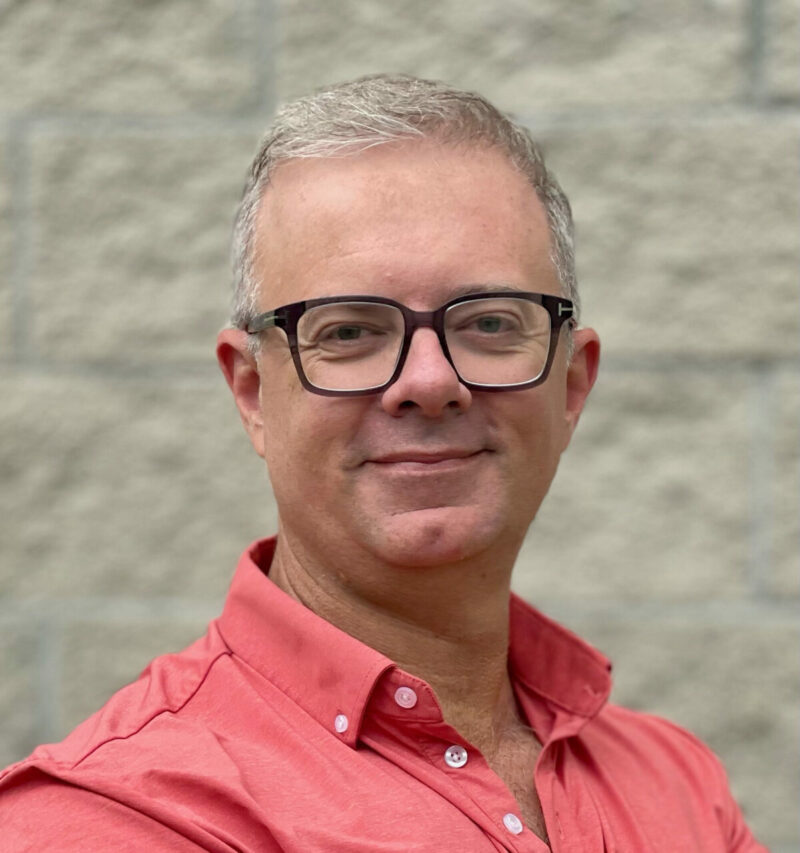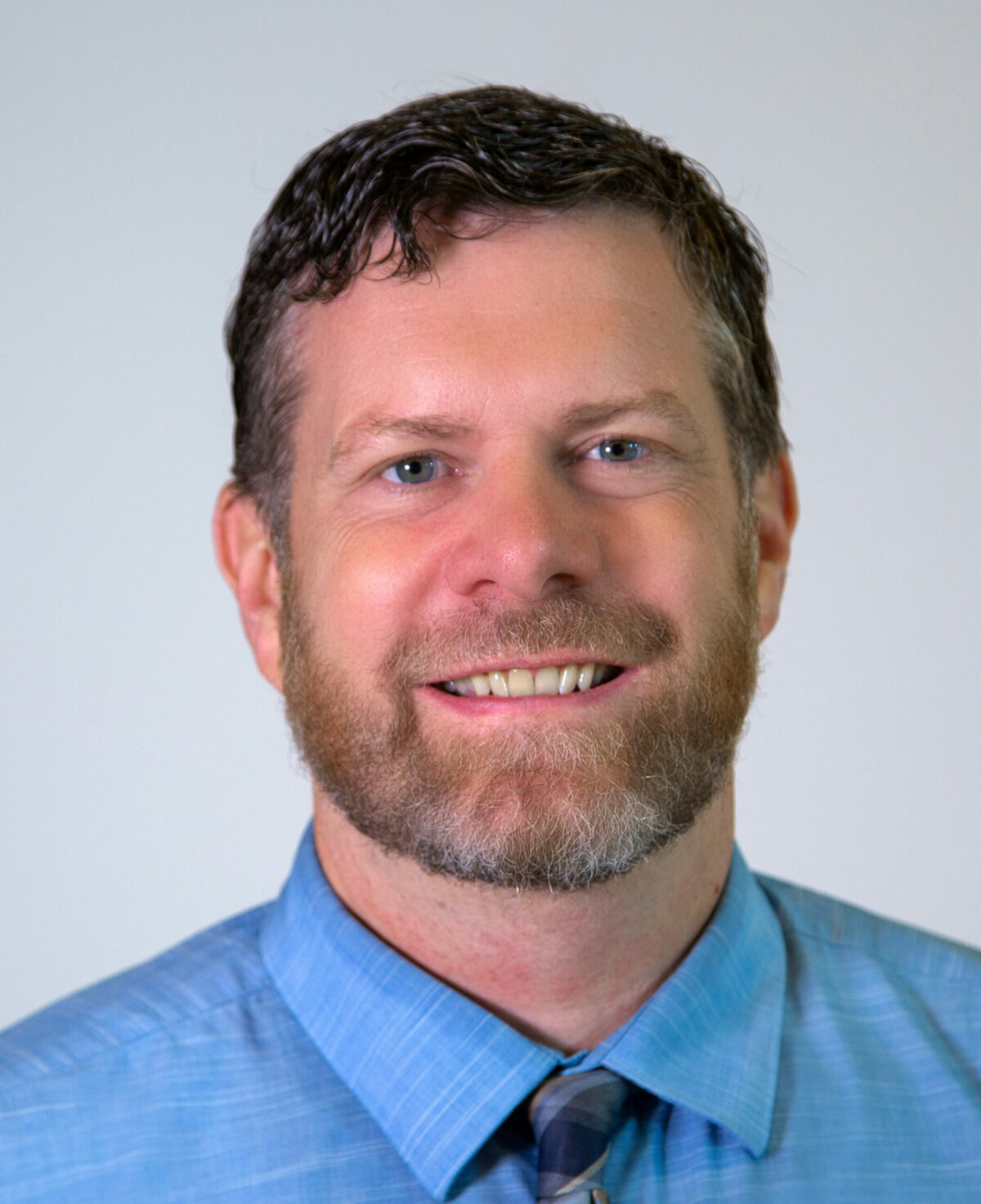
World Religion Day, observed by many each January, provides an opportunity to reflect on the role of spirituality and religion in the lives of people around the world. Following this aim, the EDGE team interviewed Dr. Mathew Mayhew, the William Ray and Marie Adamson Flesher Professor of Educational Administration and Dr. Bryan Warnick, Professor, Department of Educational Studies. Their scholarship and responses to our questions provide a broadened perspective to think deeper on the theme.
Dr. Mathew Mayhew

How do you define pluralism?
“Pluralism has been defined in a lot of different ways by a lot of different folks. There is an entry point from religion and spirituality in how we think about pluralism. But even before that, pluralism was considered outside of that domain, as an amalgamation of a couple of constructs—one being open to consider different perspectives on life’s major issues. Is that openness driven by interacting with people different than yourself? Is it driven by doing goodwill in the world? So, what are you doing to change the world, to make lives better for other people? It’s thinking about your overall orientation, into how you relate to human beings. Are you basically open to their perspectives and open to hearing about what they believe, why they believe it. . . how they think through evidence, and how they think through relating to other people?”
How can developing a pluralistic worldview contribute to creating a just and peaceful society, of increasing diversity, including faith-based differences?
“I think taking a pluralistic view of what’s going on in the world enables an individual to really sit back, reflect on what they believe, on what they know and how they make meaning of the world. By reflecting on that, they’re able to position themselves as a learner in every context. As a learner, you want to learn from other people. You want to learn from other writings. You want to learn about histories, you want to learn about complexities. And when all that comes together, ultimately you reflect on how you’re positioned in the world to do better for it.
Why are we here? Are we here just to go through life and kind of do the daily grind, or are we actually here to help other people have a better life? Through all of those reflection points and from meeting and reflecting on yourself by way of the information you’re making about your own beliefs, based on how you interact with other people who believe differently than you—I think that really does help us move forward together in creating a just society.”
What is the place of religions and religious diversity in social justice theory?
“It’s centered. I think it’s hard, because when we say centered, it’s kind of like this is the sun around which all the other planets go around. I don’t mean it that way. I mean, it should be part of the center. Because we know in our research that how students and people spiritually and religiously identify drives how they make decisions about going to college, what is safe on a college campus, who they talk to on a college campus, how they make meaning of the readings in class, what they’re willing to say in class and share.
I think we need to make sure that we take account for the safety of humans who identify in different spiritual and religious ways. We need to consider: How are they feeling safe on this campus both by way of physical safety and psychological safety? This way, when we get them into class and they experience some of the dissonance that comes with learning, they feel safe enough to approach that dissonance and try to learn from it, rather than retreat. So, to suggest that religion or spirituality is not part of the human experience is so ridiculous because it is. Research shows that even those students who identify with secularities, or don’t identify as religious have said that they’ve had spiritual experiences. So inviting spirituality and religiosity into the conversation does not alienate anyone. It actually just drives kind of how we consider meaning making across people’s lives. And to stiff arm it to suggest that it’s not part of a diversity mosaic is just unhelpful. It’s not real. So why do it?”
In one of his interviews, the scholar Eboo Patel said, “The role religion is going to play in the 21st century is going to be one of the key issues. Faith can either be a barrier of division, a bomb of destruction, or a bridge of cooperation. Our job is to make it a bridge of cooperation.”(2011) How do you think faith and religion can take the role of a bridge of cooperation in the communities?
“I think Eboo is right on track with opening up the conversation on religion and spirituality as tools or mechanism for bringing people together, for building bridges, rather than tearing down and being divisive. One of the projects that we’re working on is called InFORM. The project aims to understand how faculty envision their work by way of research, teaching, and service. There is research that indicates faculty across different faith, religious, and non-religious traditions want to change the world, one baby step at a time. So, a Muslim faculty member and a Jewish faculty member and faculty member who doesn’t identify with any religion- when asked, why do you do what you do? Oftentimes the answers are similar. Whether it has to do with changing the world through research for the better, whether it has to do with creating a just society, whether it has to do with teaching students and optimizing what they can do and creating leaders for the future. All of those themes are kind of in common with regard to how faculty approach their work. And I think how humans approach their work across worldviews.
Nobody can understand the ins and outs of every single religion out there. But we can understand religion as something that could motivate good or move through issues relating to justice and how we bridge build. That’s a much better position to take than only asking, “How do these religious differences actually evolve or devolve into ways that human beings don’t relate?”
What are your expectations from educational institutions to support spiritual and religious diversity and inter-religious understanding and cooperation?
“I think institutional leaders need to take religion and spirituality seriously. They need to involve it in strategic planning. They need to make sure that the people who are on campus—chaplains, imams, a lot of different folks—are involved in conversations about student safety and faculty practice. Policies and practices need to be invited into the conversation that are specific to how religion is experienced by students on campus. So, for example, faculty should be aware of when Ramadan is because students are fasting through that period and may have a lot of assignments or heavy exams due during that period. It might not necessarily be a great idea for students who are fasting.
In other words, it’s important to get things in the syllabus that make all students feel very welcome in terms of how they see themselves spiritually and religiously. Invite students to talk openly about their religion, or privately to a faculty member about how they observe their own religion, and how that might play out in terms of expectations for coursework. For incident reporting, is there a protocol in place for students who feel discriminated against due to their religion? Do they know exactly where to go, and how to proceed? And then is the institution ready to respond?”
How can The Ohio State University community support such cooperation?
“I think it’s already doing a great job. Ohio State has participated in one of our open, transparent studies about what makes campuses welcoming for students across different religious and spiritual world views. You can see that online at the inspiresindex.org. Also, I’ve been in meetings with key stakeholders at Ohio State to talk most recently about antisemitism on the campus. Inviting faculty into that conversation, especially faculty who know something about this is an important first step to creating dialogue and change in policy and practice. So, I think Ohio State is doing a fantastic job with this. Even this EDGE Q&A is a part of that. I’m thrilled to see that religion and spiritual matters are being welcomed into how EDGE is thinking about itself and its involvement in the college.”
Dr. Bryan Warnick

How do you think religions and religious diversity inform conversations about social justice?
“They occupy a strange, contested, and interesting position. Religion is often forgotten in discussions of equity, diversity, and inclusion, but it is part of us that we often feel strongly about and deeply connected to. It is absolutely a part of what make us who we are and its recognition in the public sphere (in some sense) is therefore essential. Also, because many religious traditions are so old and rich, the intellectual resources they include are vast. Ignoring such resources stifles our work in universities. Religion has also sometimes played a role in strengthening people’s resolve to create a more just and humane world. This means that religion can be valuable ally. But it is also complicated. Religious traditions, interpreted certain ways, can themselves also be the source of injustice and social division. There are also traditions of separation of church and state that must be respected, for both ethical and constitutional reasons. This makes the full inclusion of religious perspectives and identities awkward and difficult to navigate. From my perspective, a philosophical perspective, it makes the question of religion in the public sphere really interesting.”
What are your expectations from higher education institutions to support spiritual and religious diversity and inter-religious understanding and cooperation?
“I think it is okay for different colleges and universities to have different missions. Public institutions, I think, need to do more to include religious perspectives among its faculties, students, and programs. I think ignoring an identity is one way of being hostile to that identity. It is important that public institutions not be seen as hostile to religion, while also not seeming to endorse any religious message. This is necessary for public universities to maintain legitimacy in public life. I also think there needs to be room for private institutions that have explicitly religious missions. While these institutions may seem conservative on the outside, I have observed that they often have a moderating force within fundamentalist communities. They are “safe spaces” where students encounter a broader set of ideas for the first time, and they place a valuable role.”
How can the Ohio State community support spiritual and religious diversity and inter-religious cooperation?
“I think [Ohio State] should continue to send strong signals condemning religious hatred and discrimination. It should do more to invite speakers with religious perspectives who want to engage with the great issues of our day. We should be sure to include it in discussions of implicit bias training. Faculty should include some examples of religious thought in syllabi, where appropriate.”

